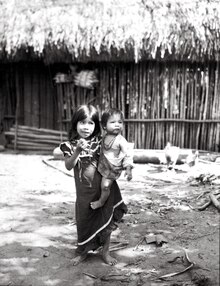
The demographic characteristics of the population of Bolivia are known from censuses, with the first census undertaken in 1826 and the most recent in 2024. The National Institute of Statistics of Bolivia (INE) has performed this task since 1950. The population of Bolivia in 2024 reached 11 million for the first time in history. The population density is 11.36 inhabitants per square kilometer, and the overall life expectancy in Bolivia at birth is 68.2 years. The population has steadily risen from the late 1800s to the present time. The natural growth rate of the population is positive, which has been a continuing trend since the 1950s; in 2012, Bolivia's birth rate continued to be higher than the death rate. Bolivia is in the third stage of demographic transition. In terms of age structure, the population is dominated by the 15–64 segment. The median age of the population is 23.1, and the gender ratio of the total population is 0.99 males per female.
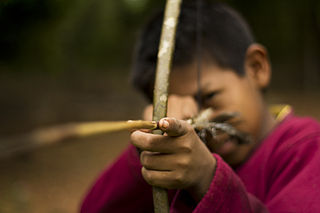
The Guarani are a group of culturally-related indigenous peoples of South America. They are distinguished from the related Tupi by their use of the Guarani language. The traditional range of the Guarani people is in what is now Paraguay between the Paraná River and lower Paraguay River, the Misiones Province of Argentina, southern Brazil once as far east as Rio de Janeiro, and parts of Uruguay and Bolivia.

The Wichí are an indigenous people of South America. They are a large group of tribes ranging about the headwaters of the Bermejo River and the Pilcomayo River, in Argentina and Bolivia.

Indigenous peoples of Mexico, Native Mexicans or Mexican Native Americans, are those who are part of communities that trace their roots back to populations and communities that existed in what is now Mexico before the arrival of Europeans.

Argentina has a racially and ethnically diverse population. The territory of what today is Argentina was first inhabited by numerous indigenous peoples. The first white settlers came during the period of Spanish colonization, beginning in the 16th century. The Spaniards imported African slaves, who would go on to become the first Afro-Argentines. Following independence from Spain in the 19th century and well into the 20th century, numerous migration waves took place, with Argentina being the second most popular destination for migrants in the early 20th century, after the United States. Most of these migrants came from Europe.
The Mbayá or Mbyá are an indigenous people of South America which formerly ranged on both sides of the Paraguay River, on the north and northwestern Paraguay frontier, eastern Bolivia, and in the adjacent province of Mato Grosso do Sul, Brazil. They have also been called Caduveo. In the 16th century the Mbayá were called Guaycuru, a name later used generically for all the nomadic and semi-nomadic indigenous peoples of the Gran Chaco. The Kadiwéu people of Brazil are the surviving branch of the Mbayá.

The languages of Bolivia include Spanish; several dozen indigenous languages, most prominently Aymara, Quechua, Chiquitano, and Guaraní; Bolivian Sign Language. Indigenous languages and Spanish are official languages of the state according to the 2009 Constitution. The constitution says that all indigenous languages are official, listing 36 specific languages, of which some are extinct. Spanish and Quechua are spoken primarily in the Andes region, Aymara is mainly spoken in the Altiplano around Lake Titicaca, Chiquitano is spoken in the central part of Santa Cruz department, and Guarani is spoken in the southeast on the border with Paraguay and Argentina.

Spanish is the language that is predominantly understood and spoken as a first or second language by nearly all of the population of Argentina. According to the latest estimations, the population is currently greater than 45 million.
Araona or Cavina is an indigenous language spoken by the South America Araona people; about 90% of the 90 Araona people are fluent. Use of the language amongst the tribe is considered vigorous although Spanish knowledge is increasing. The Araonans live in the headwaters of the Manupari river in northwest Bolivia. Their language has a dictionary and portions of the Bible have been translated into Araona.

The Mojeños, also known as Moxeños, Moxos, or Mojos, are an indigenous people of Bolivia. They live in south central Beni Department, on both banks of the Mamore River, and on the marshy plains to its west, known as the Llanos de Mojos. The Mamore is a tributary to the Madeira River in northern Bolivia.
The Toromona are an indigenous people of Bolivia. They are uncontacted people living near the upper Madidi and Heath Rivers in northwestern Bolivia. Bolivia's Administrative Resolution 48/2006, issued on 15 August 2006, created an "exclusive, reserved, and inviolable" portion of the Madidi National Park to protect the Toromona.

The Jesuit Missions of Chiquitos are located in the Santa Cruz department in eastern Bolivia. Six of these former missions collectively were designated as a UNESCO World Heritage Site in 1990. Distinguished by a unique fusion of European and Amerindian cultural influences, the missions were founded as reductions or reducciones de indios by Jesuits in the 17th and 18th centuries to convert local tribes to Christianity.

Chané is the collective name for the southernmost Arawakan-speaking peoples. They lived in the plains of the northern Gran Chaco and in the foothills of the Andes in Paraguay, Brazil, Bolivia, and Argentina. The historical Chané are divided into two principal groups: the Chané proper who lived in eastern Bolivia, and the Guaná who lived in Paraguay and adjacent Brazil. Twenty-first century survivors of the Chané are the Izoceno people of Bolivia and 3,034 descendants reported in Argentina by the 2010 census. Survivors of the Guaná are the Tereno and the Kinikinao both of Mato Grosso do Sul province in Brazil.

The Ayoreo are an indigenous people of the Gran Chaco. They live in an area surrounded by the Paraguay, Pilcomayo, Parapetí, and Grande Rivers, spanning both Bolivia and Paraguay. There are approximately 5,600 Ayoreo people in total. Around 3,000 live in Bolivia, and 2,600 live in Paraguay. Traditionally nomadic hunter-gatherers, the majority of the population was sedentarized by missionaries in the twentieth century. The few remaining uncontacted Ayoreo are threatened by deforestation and loss of territory.

Bolivians are people identified with the country of Bolivia. This connection may be residential, legal, historical or cultural. For most Bolivians, several of these connections exist and are collectively the source of their being Bolivian.
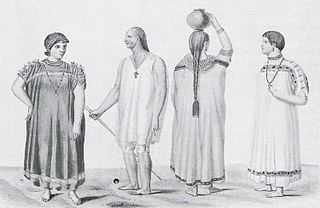
The Chiquitano or Chiquitos are an indigenous people of Bolivia, with a small number also living in Brazil. The Chiquitano primarily live in the Chiquitania tropical savanna of Santa Cruz Department, Bolivia, with a small number also living in Beni Department and in Mato Grosso, Brazil. In the 2012 census, self-identified Chiquitanos made up 1.45% of the total Bolivian population or 145,653 people, the largest number of any lowland ethnic group. A relatively small proportion of Bolivian Chiquitanos speak the Chiquitano language. Many reported to the census that they neither speak the language nor learned it as children. The Chiquitano ethnicity emerged among socially and linguistically diverse populations required to speak a common language by the Jesuit Missions of Chiquitos.
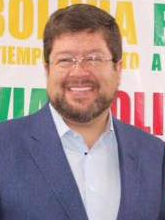
White Bolivians, also known as Caucasian Bolivians, are Bolivians who have predominantly or total European and West Asian ancestry, most notably from Spain and Germany, and to a lesser extent, Italy and Croatia.
Pacahuara people are an indigenous people of Bolivia. A small group live in Tujuré, a community located near the Chácobo people on the Alto Ivón River in the Beni Department. The group only consists of four people. The fifth, a 57-year-old woman, died on 31 December 2016 in the village of Tujure in the north-east of the country. Another uncontacted group of Pacahuara, with 50 members in eight families, lives between Rio Negro and Río Pacajuaras in the Pando of northeastern Bolivia, near the Brazilian border.

The Cavineño People are an ethnic group in Bolivia. They mainly live along the Beni and Madidi rivers. There were 3,884 of them in 2012 of whom 1,173 speak the Cavineña language natively. Almost all of them speak Spanish as well. According to Alfred Métraux the Cavineño and the Araona people are so intermixed with other Takanan-speaking peoples that it can be difficult to treat them separately.
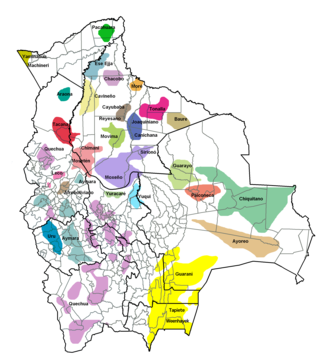
The Tacana people are an ethnic group who live in the Beni department of Bolivia. There were 18,535 of them in 2012, of whom 559 speak the Tacana language natively.
